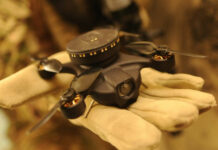DSM Dyneema has been awarded a contract for the development of an improved combat helmet based on advanced Ultra-high-molecular-weight polyethylene (UHMWPE) material solution. DSM Dyneema has been focusing on research and development of new UHMPWE series of materials to substantially lighten the load for military and law enforcement. As part of the contract the company will develop new unidirectional (UD) materials suitable for the improved combat helmet next generation improved combat helmet application, offering superior ballistic performance at lower weight.
The company launched the Dyneema HB80 in June 2009. Initially known as Prototype Dyneema X31, this UD composite material has undergone extensive ballistic and secondary property testing, demonstrating the potential to significantly lighten the load carried by soldiers, providing greater comfort and mobility for soldiers wear protective gear. HB80 offers over the highest ballistic performance on the market today. With 35 percent greater protection against fragmentation threats and its advanced ballistic properties, SWAT helmets made of HB80 could be produced with half the weight of today’s models. This material has now been selected for both body and vehicle armor applications where ultra-light weight and enhanced performance are required.
The HB80 has been extensively tested and evaluated in different helmet constructions and is currently in the final development testing phase of ECH program. The ECH will use manufacturing techniques different from those associated with resin-impregnated para-aramids while the UHMWPE uses advanced thermoplastic processing.
According to DSM Dyneema the company is already working with all major helmet manufacturers involved in the Enhanced Combat Helmet (ECH) program. Unlike previous models made of Kevlar, Improved versions of the ECH will employ the high tech UHMWPE developed specifically to address the requirements of the U.S. Army and Marine Corps. The program is a joint PEO Soldier/Marine Corps Systems Command developmental effort that will provide increased protection against ballistic and fragmentation threats. Previous reports about the ECH mentioned that the new lightweight helmet will match or exceed the ballistic fragmentation resistance of current helmets offering a significant weight reduction of approximately 20%, which means above 0.5 pounds as compared to the older designs (reference).



















